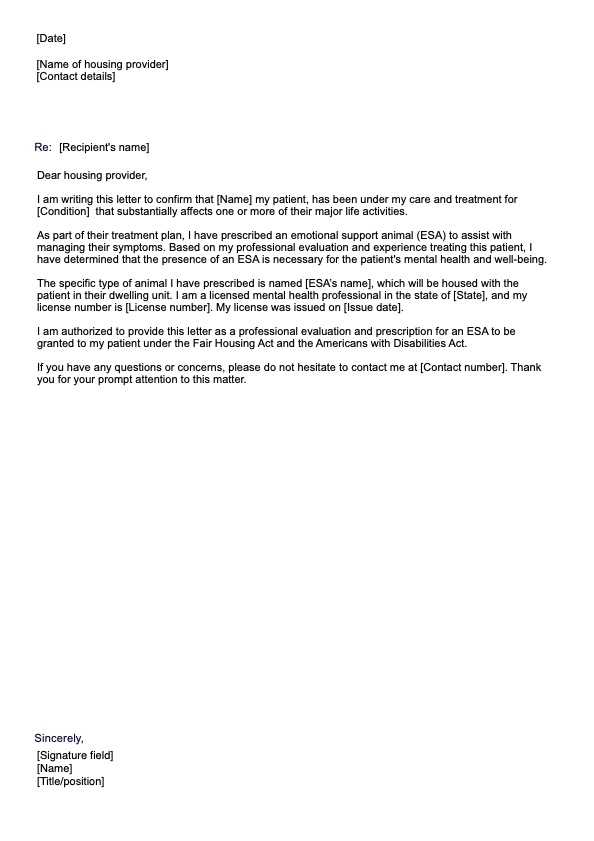To qualify for an emotional support animal, you must have a diagnosed mental or emotional disorder, and a healthcare provider or mental health professional must determine that the presence of the animal alleviates symptoms of your condition. This typically involves obtaining an ESA letter from the professional.

ESA Letter Template
Access a free emotional support animal letter template and Sample to help you create a personalized ESA letter for your patient.
Use Template
ESA Letter Template Template
Commonly asked questions
The Fair Housing Act allows ESAs in housing situations, including apartments, condominiums, and houses, even with a "no pets" policy. The Air Carrier Access Act also will enable ESAs to accompany their owners on flights.
No, ESA letters typically expire and may need to be renewed periodically.
EHR and practice management software
Get started for free
*No credit card required
Free
$0/usd
Unlimited clients
Telehealth
1GB of storage
Client portal text
Automated billing and online payments











